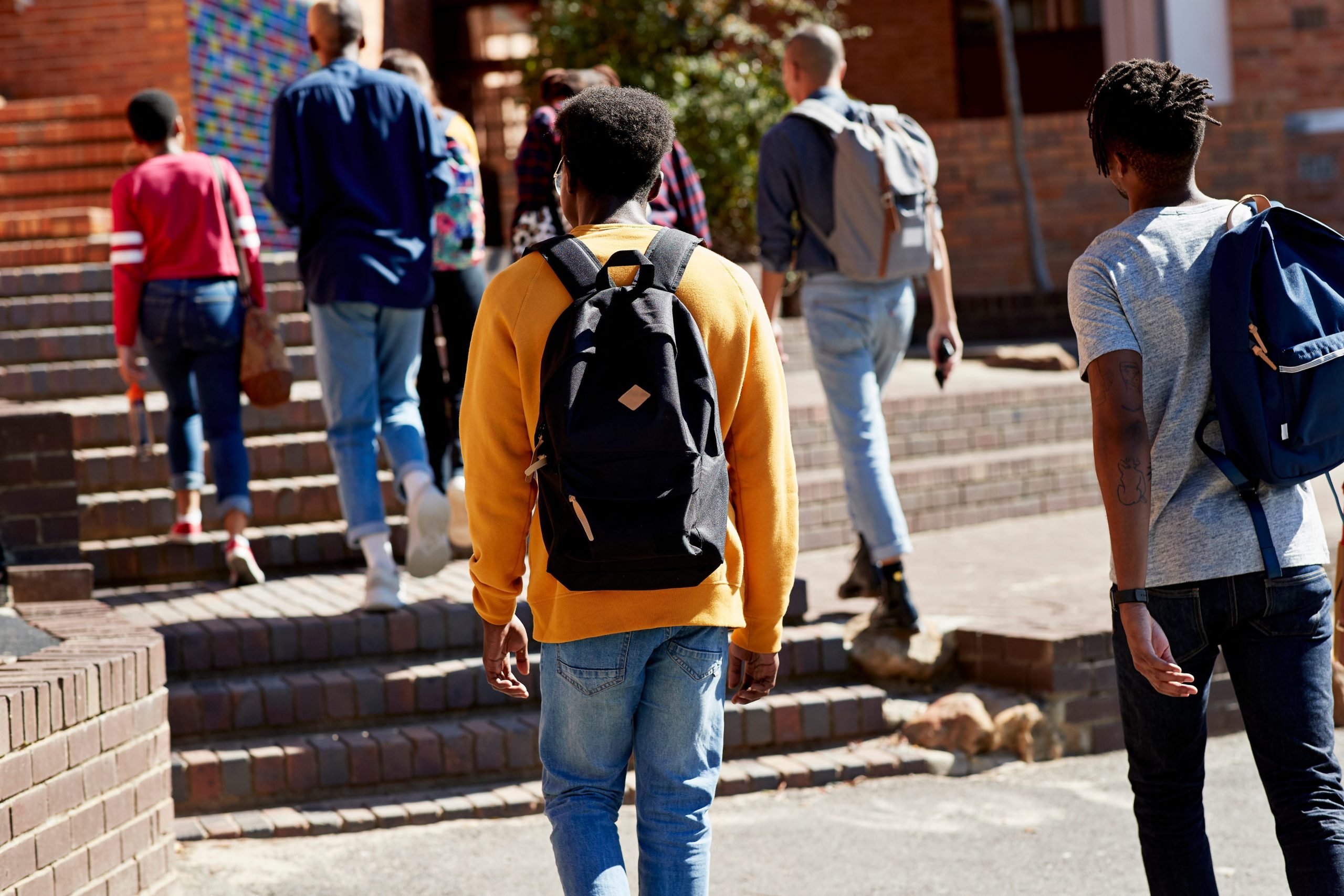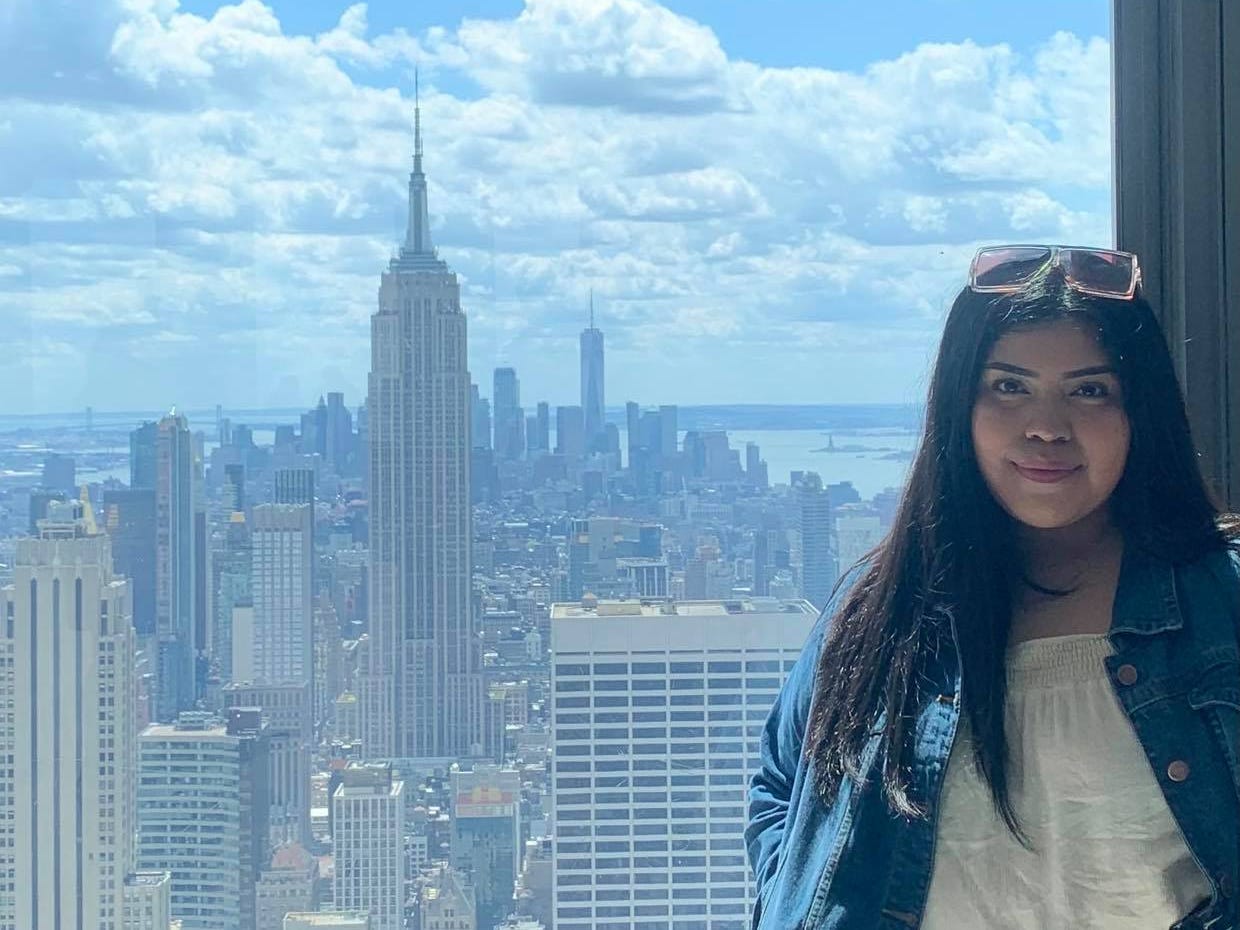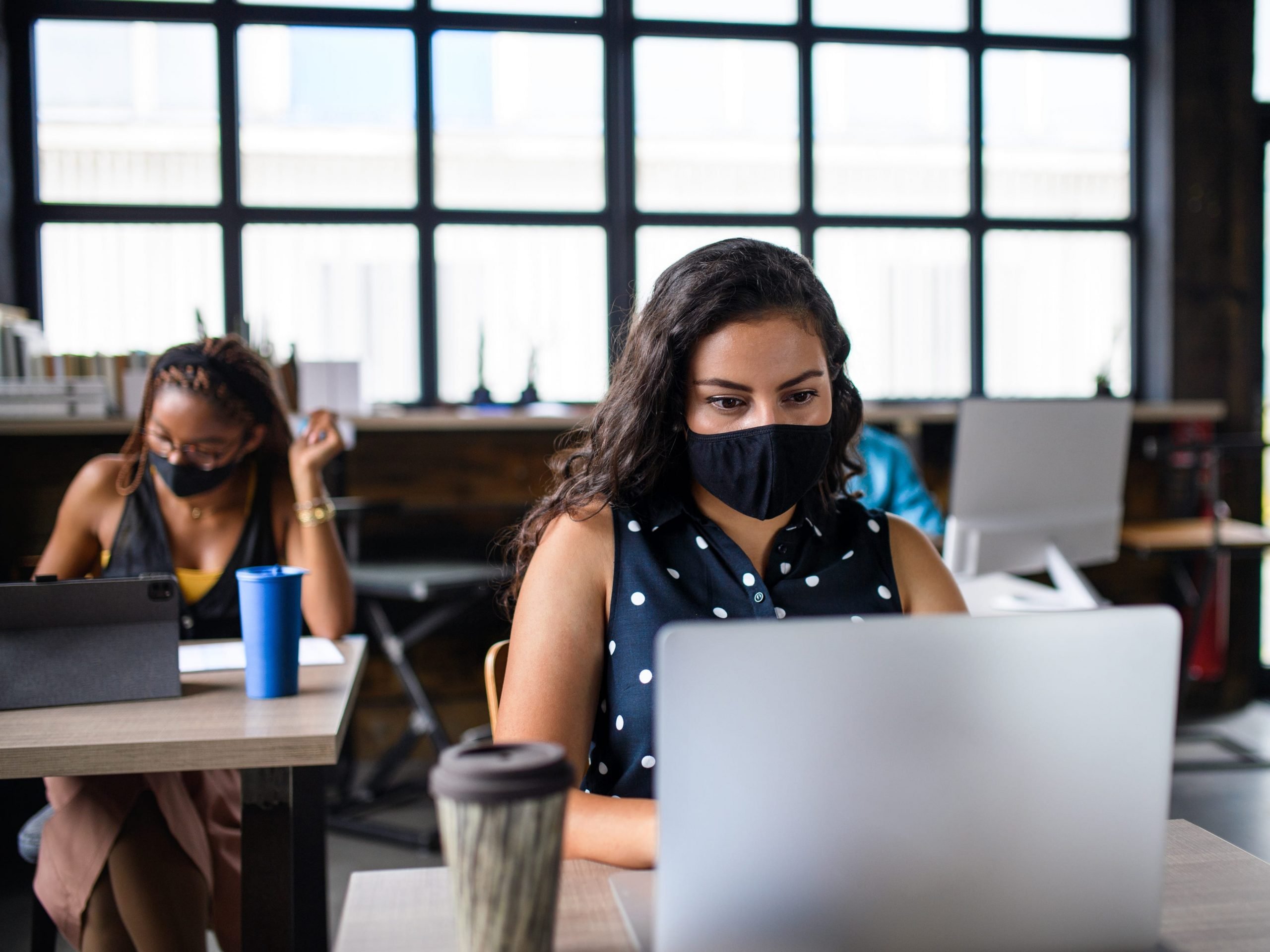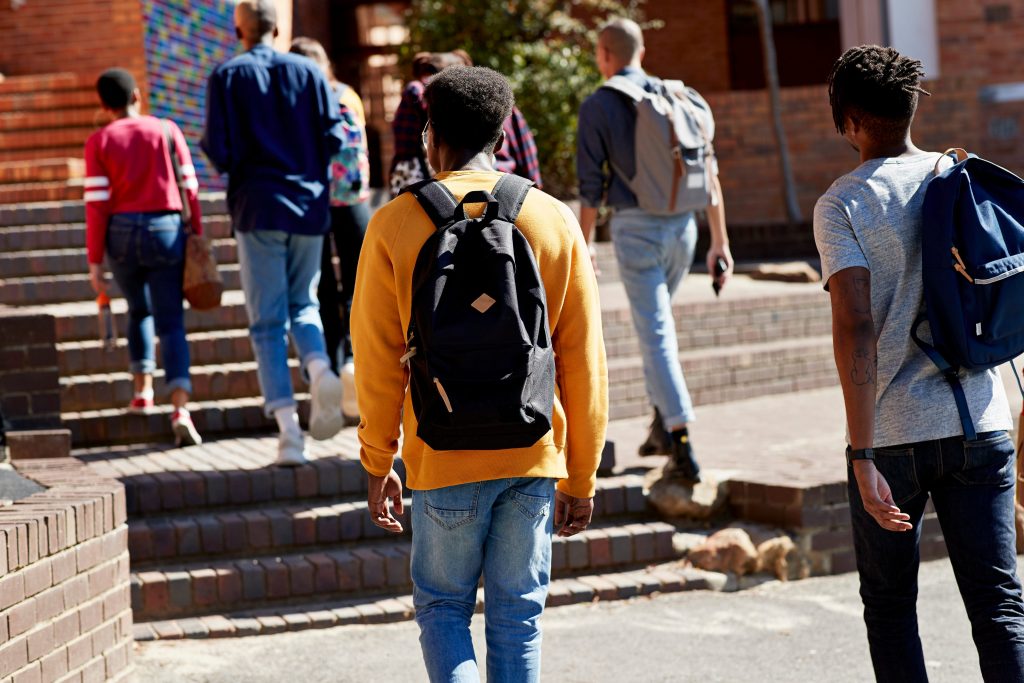
Klaus Vedfelt/Getty Images
- As states rush to reopen colleges, experts say students of color face disparate risks of setbacks.
- Many Minority Serving Institutions (MSIs) dialed back plans to reopen following outbreaks on campus.
- Experts tell Insider students of color face academic, health and economic risks from reopening.
- Visit Insider's homepage for more stories.
The Delta variant of the coronavirus has complicated the smooth back-to-school return many students of color were envisioning while the universities that educate them struggle to adapt.
Members of Spelman College's faculty became the first institution in the state of Georgie to have its faculty refuse to conduct in-person learning, alleging the school wasn't taking necessary precautions to ensure their safety.
"Much to our disappointment, faculty have not received clear and enforceable protocol and safety guidelines that will ensure our health and well-being when teaching face-to-face," the faculty council had said in a statement.
Council members of the Atlanta-area institution have since reversed their decision and resumed in-person classes last week.
But across the country schools known as Minority Serving Institutions (MSI) have faced challenges as they prepared for the return of in-person learning.
Howard University, a Historically Black College and University (HBCU) located in Washington, DC, moved the latter half of its Freshman Week online after a viral video showed little social distancing and few masks at one of its events.
Meanwhile, the Alamo Community Colleges District and The University of Texas at San Antonio - schools serving predominantly Latino populations - announced that the first few weeks of classes would be virtual due to a spike in Covid cases in the surrounding San Antonio community.
Despite the introduction of vaccines and other safety measures, campus life at some colleges remains in-flux, and with it, the experiences of students of color, who stand bigger academic, economic, and physical and emotional health threat.
Education experts told Insider that schools moving fully remote for another semester could put these students more at risk.
Students of color face disparate challenges as colleges reopen
"We know that the rates of infections and Covid deaths are hitting communities of color at much larger rates than white communities," David Rivera, a national advisor to The Steve Fund, an organization that promotes mental health of young people of color, told Insider.
A study released earlier this year from researchers at George Washington University found college students of color "experienced numerous disruptions to their schooling, work, and living situations" because of the pandemic.
These "additional stressors, related to academic progress," also exacerbated "mental health challenges."
Rivera noted that "there's a lot of concern" among experts, students and parents "about the pandemic setting back the journey towards equity."
"Any disparity that was pre-existing has just been exacerbated by the pandemic," he said.
First-generation and low-income college students have especially felt the brunt of the pandemic's impact on their education. Data showed higher dropout rates among students from families making less than $75,000.
Any disparity that was pre-existing has just been exacerbated by the pandemic.David Rivera, The Steve Fund
Without the support and access to resources they might have found in an in-person school setting, students like Jenna Tran, a freshman at Rice University and first-generation college student, have been left to navigate the college application process by themselves.
"It was really hard to reach out to anyone," Tran told Insider. "I didn't know anything about the college application process. I was just sitting there, trying to figure out what I was supposed to do."
At one point Tran thought she had bungled her chances of going to college this fall completely.
She had confused the deadline for the financial aid application, but was luckily able to submit it at a later date.
Virtual learning can reinforce cultural, social barriers

Courtesy of Cassandra Najera
But for many, the virtual learning universities endured during the pandemic came with its own set of challenges - problems made worse by social or cultural barriers
Cassandra Najera was able to be on campus her first year at Babson College after the school offered a hybrid option.
But it was still tough for the now-sophomore business major to edge a word in and remain engaged in the classes she took over Zoom.
"Sometimes you're just afraid to speak up," Najera told Insider, noting that "being in an in-person setting feels more personalized."
"It feels like I can speak up more and be more comfortable in the classroom setting as opposed to virtual where you have to un-mute yourself at the right time," she said.
Trina Pham was so eager to avoid online learning, the senior at Clemson University opted to take time off from school to complete internships at Space X and Tesla instead.
When she returned to take online classes in spring 2021, she struggled.
"I suffer a lot from social anxiety and I typically need friends to do well and it's so hard to make friends over Zoom," Pham said, adding that connecting with peers and professors virtually "doesn't feel as organic" as it does in a physical classroom.
Pham also expressed that professors appeared to be assigning a "heavier" workload to compensate for the lack of FaceTime, which amplified stress among her friends who were dealing with other crises, including "their parents dying and financial issues."
Therefore, a lack of access to reliable Internet can also complicate students' thoughts on returning to lecture halls and crowded cafeterias.
A survey by a coalition of education and civil rights groups found that one-in-three Black, Latino, and American Indian or Alaska Native households don't have access to high-speed Internet at home, which can limit their ability to access online learning.
Pham noted that she and other students living off-campus would have to rely on hotspots for Internet access. While she was grateful her school provided the resource, she said it reinforced those disparities in Internet access among college students.
Despite the numerous challenges associated with virtual learning for students of color, it can have its value. For some students, particularly those with disabilities, online classes are more accessible than in-person ones.
Rivera acknowledged that remote learning has provided a buffer for students of color who have routinely dealt with microaggressions while they were in-person.
How experts say colleges can best support students of color

Halfpoint/Getty Images
The pandemic has proved to be a fluid situation. Deciding how to best keep students, faculty, and staff safe amid a public health crisis is difficult.
Alyssa Lederer, lead author of "More than Inconvenienced: The Unique Needs of College Students during the Covid-19 Pandemic," told Insider that students have not merely been inconvenienced by the public health crisis; they've been dealing with issues like food and housing insecurity, loneliness, and grief.
And for some students of color, increased racist violence and harassment has introduced another layer of challenges to contend with.
"There's still this general notion of college students being privileged, that it's not as big of a deal for college students as it is for others, the assistant professor at Tulane University's School of Public Health and Tropical Medicine said. "But there's a spectrum of how students have been impacted."
Zoe Geh, a senior at Howard University, said her experiences and that of her peers align with what Lederer has observed.
"Students were displaced at a time we weren't expecting," she told Insider. "For many students, home was not the most conducive environment to do their work, especially while they were dealing with other challenges, like loss."
"I personally had losses in my family and in my community that made it hard to pay attention in school," Geh added.
After spending all that time being virtual, the climate on campus has changed. The way that we function is not the same.Zoe Geh, Howard University senior
HBCUs are well-positioned to weather the pandemic because of "their ability to get students to follow Covid protocols," such as getting vaccinated and wearing masks indoors in areas of high transmission, said Marybeth Gasman, a professor of education at Rutgers University whose research focuses on minority serving institutions.
Gasman said fostering a sense of collective responsibility on campuses is an essential component to ensuring colleges are safe as the new academic year begins.
"Students tend to trust that the administration and faculty care about them and have their best interests at heart," Gasman said. "HBCUs tend to operate with a collective, rather than an individual mindset, where members of the campus community see their success linked to each other."
One underrated way for administrators to foster trust among the campus is by communicating with students and checking in with them. At Howard, Geh expects more opportunities for students to give input and feedback, including town halls, questionnaires, and college-wide events.
Even amid the uncertainty of the Delta variant, she's more excited and hopeful than anything else about the upcoming school year.
"After spending all that time being virtual, the climate on campus has changed. The way that we function is not the same," Geh said.
"But it's definitely better to be here as much as we can than to be virtual."
